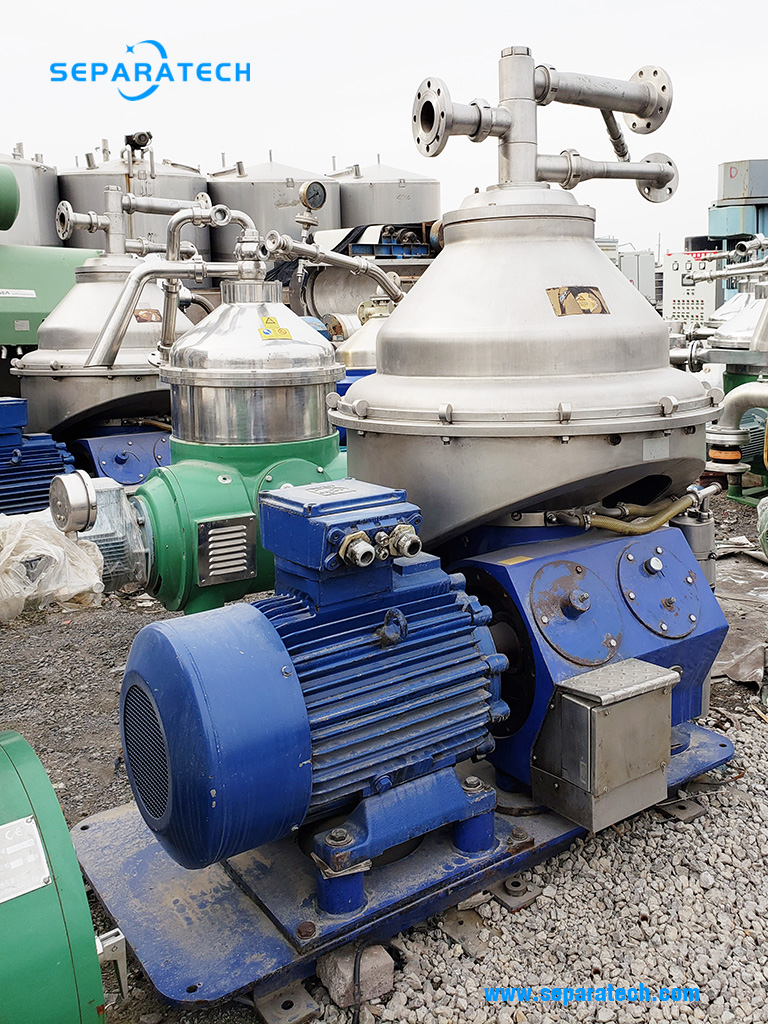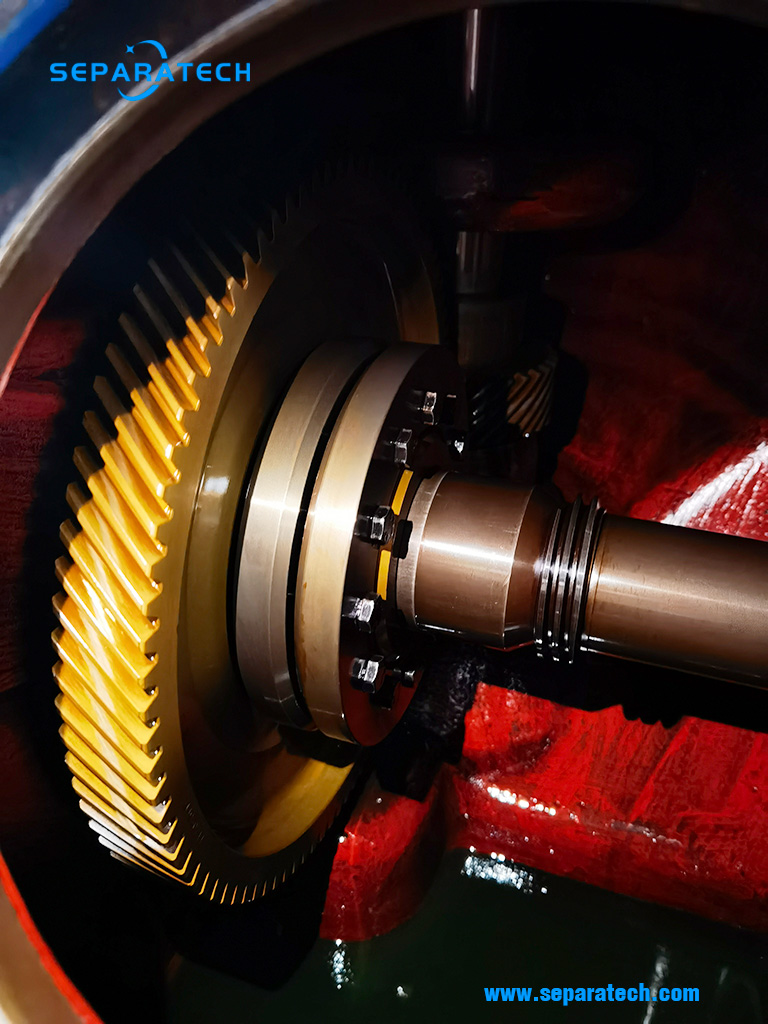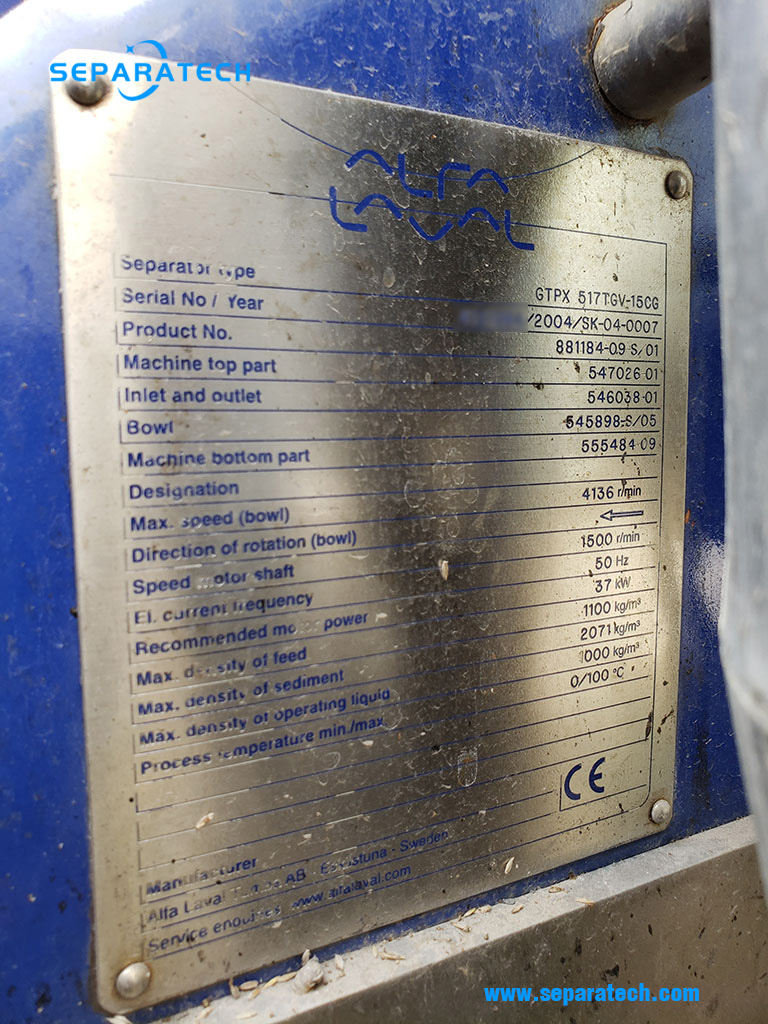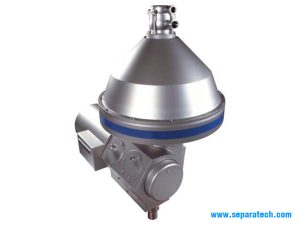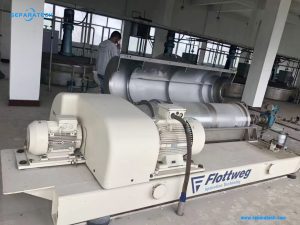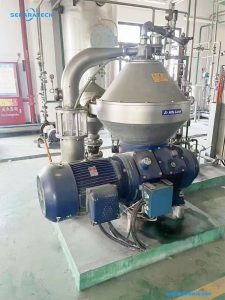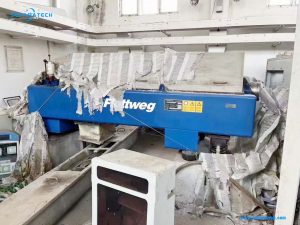Used Disc Separator GTPX517TGV-15CG of Alfa Laval
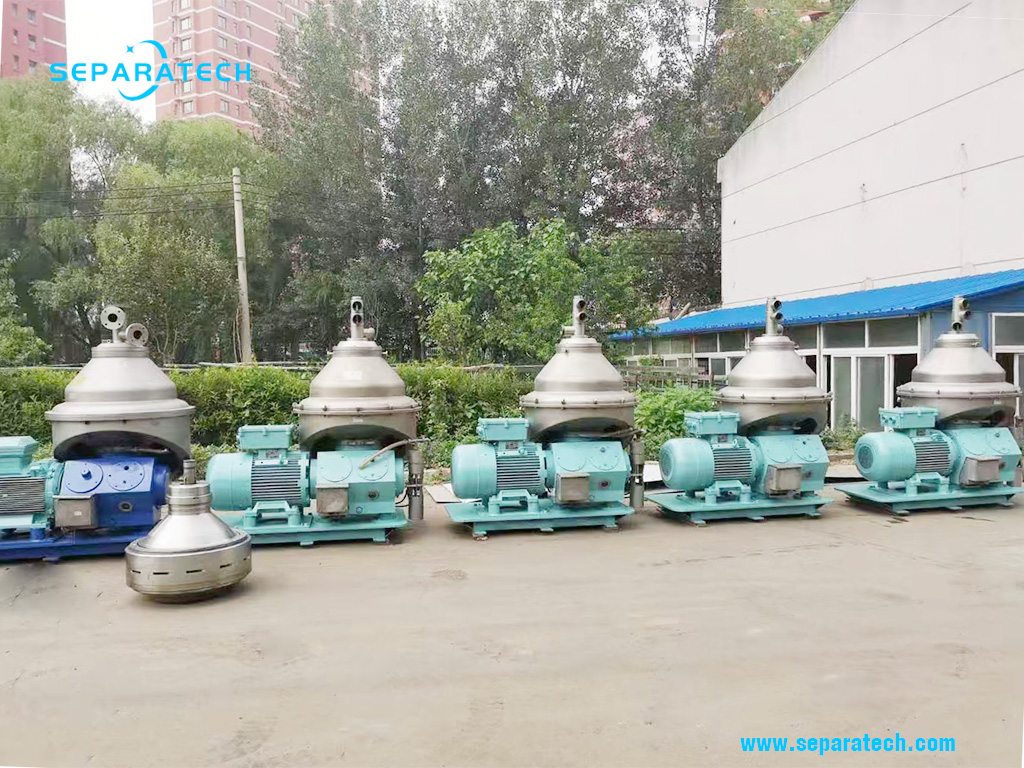
Applications
The GTPX517TGV-15CG is designed in 3-phase (fuel oil / water / solids) separation. it mainly used for heavy fuel oil treatment in power plant. The GTPX517TGV-15CG is the core component in the complete process and system solution for the best possible treatment of these fuels. Special features of the GTPX517TGV-15CG include the inlet and an optimised disk stack, which ensures the highest separation efficiency of water and solids.
Technical specifications
Designation: GTPX517TGV-15CG
Manufacturing year: 2004
Manufacturer: Alfa Laval
Hydraulic capacity: 20 m3/h
Bowl speed: 4136 rpm
Motor: 37 Kw
Feed temperature range: 0–100°C (32–212°F)
Standard design
The bowl is mounted on a vertical spindle driven by a horizontally mounted motor via a worm gear. The bottom part of the machine forms a housing for the worm gear and also contains the oil bath. Around the bowl is a space formed by the upper part of the frame (which acts as a receptacle for the solids), and the frame hood (which carries the inlet and outlet devices). The design conforms with a number of EC directives, such as the general directives for machinery and centrifuges. The machine is equipped with DIN flange connections.
Operating principles
Separation takes place inside a rotating bowl. The feed is introduced to the bowl from the top via a stationary inlet pipe and accelerated in the distributor before entering the disc stack. The inlet device in the distributor ensures smooth acceleration of the feed liquid. The separation of the two liquid phases and the solids takes place between the discs. The oil phase moves towards the centre and is discharged via a stationary paring disc. The water droplets separated from the feed coalesce at a cylindrical oil/water interface, and the water phase leaves the bowl over the top disc and is taken out by another paring disc. The diameter of a gravity disc, forming the inlet to the paring disc chamber, determines the position of the oil/water interface in the bowl and has to be selected according to the density of the light phase. Before oil is fed into the bowl, water is added to form a liquid seal around the periphery of the top disc. The heavy solids are collected at the periphery and ejected from the bowl intermittently at full operating speed. This discharge is achieved by a hydraulic system below the separation space. At preset intervals, this system forces the sliding bowl bottom to drop down, thus opening the solids ports at the periphery. Before discharge, water is added to displace the oil in order to minimize the loss of oil. After discharge, a new water seal is established in the bowl.
